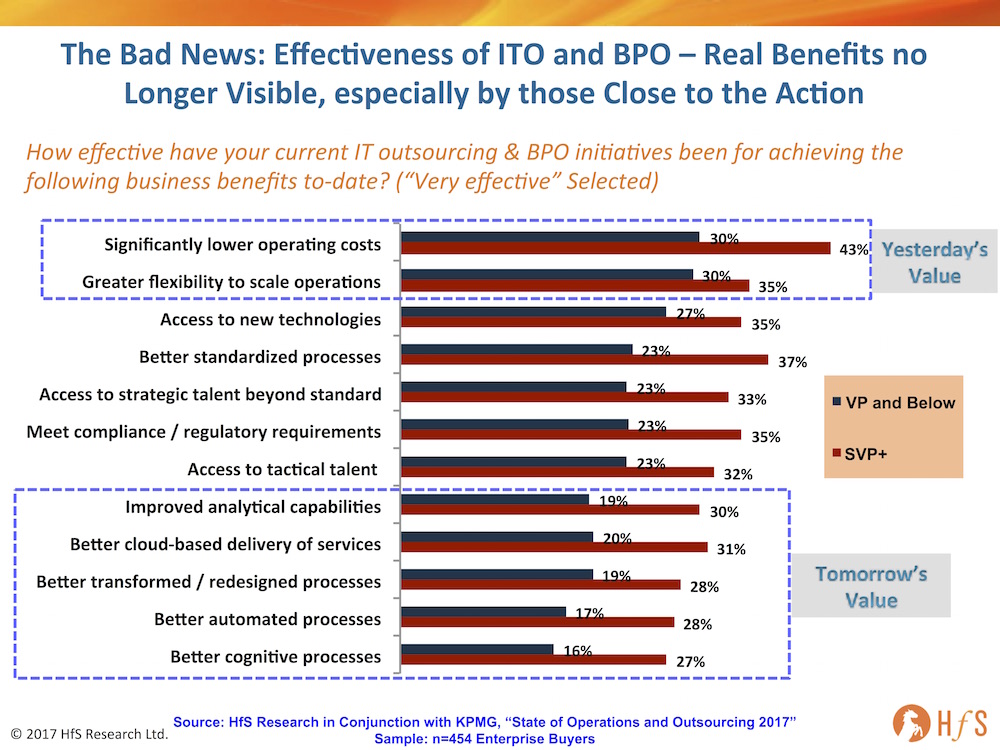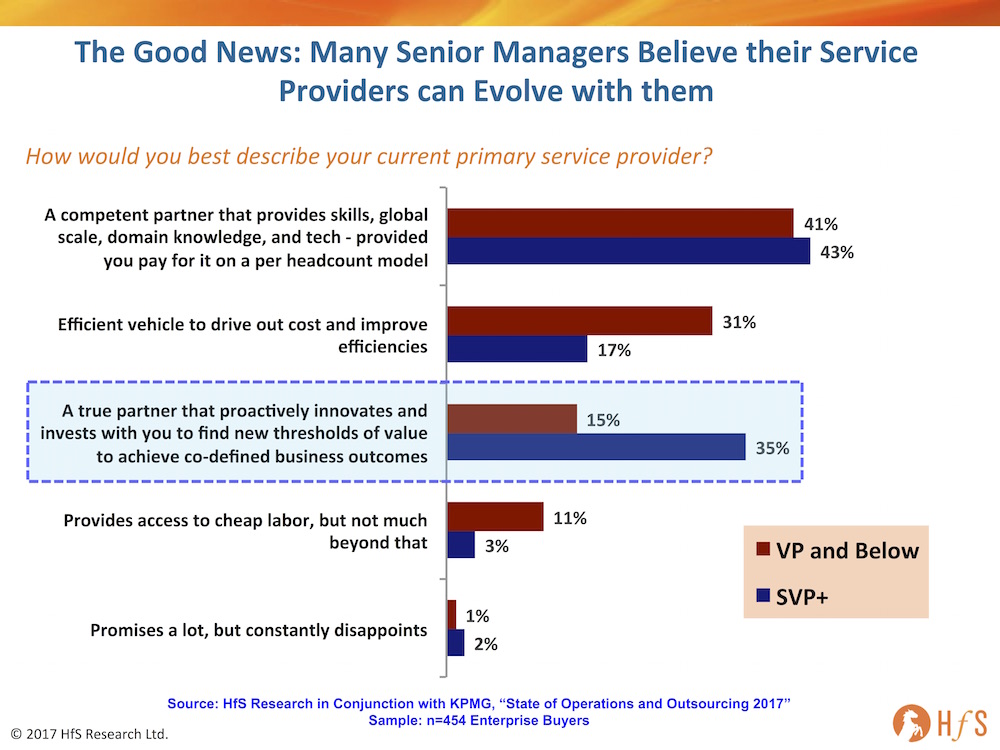Remember all those juicy reasons why companies jumped into outsourcing? Like driving out cost, standardizing processes, perhaps even finding a few nuggets of innovation along the way with better access to talent and technology? Well our new 2017 State of Operations and Outsourcing Study of 454 major enterprise buyers gives a pretty gloomy picture of the current value impact of today’s outsourcing engagements:
What made us happy in the past no longer passes muster
If there was ever one home-banker benefit from outsourcing, it was always the ability to take 30%+ off the bottom line cost of running a process or set of processes.
The VPs and below are those who are managing the engagements – and not even a third of them view their engagements as being very effective at driving out significant cost or making their operations more flexible and scalable. Their bosses are slightly less cynical, but still the vast majority is underwhelmed.
“But how can they be unhappy, we saved them so much money?” I hear frustrated providers cry…
Well, the answer is quite simply that those costs have been removed from the balance sheet – they no longer exist. Managing operations in a global environment is now the new normal – money that was saved was a onetime experience in the past. It’s like trading in your Hummer for a Prius… you don’t think to yourself, everytime you fill up with gas, “Wow, I’m saving $50 per tank”, but you might even think, “Hmmm… maybe I’ll get a fully electric car next and save even more on my running costs”.
We can go on to bemoan the disappointing lack of effectiveness from analytics, automation and cognitive from over four-fifths of outsourcing engagements, but we know clients are unlikely to have invested actual funds in these areas as part of most of these engagements today – they are getting what they have paid for in the past.
All is not lost as many operations leaders want their service providers to change with them
However, the next wave of engagements have to be set up in a very different way to bring back delights to these jaded customers, which is where the brighter news appears:
What’s encouraging here is that buyers, by and large, do not view their service providers as mere efficient cost take-out vehicles, which was how well over half viewed them a couple of years ago. While 43% of SVPs and above see service providers as competent partners who can deliver the goods, another 35% actually view them as real innovation partners who can work with them to achieve co-defined business outcomes. This is a breakthrough for the services industry.
The Bottom-line: The door is wide open for ambitious providers willing to invest in developing their talent, but closing firmly shut for those perpetuating what worked in the past
There has never been a time in the history of services where we’ve arrived at such a pivotal turning point – what used to work for clients is now commodity, and those service providers wanting to avoid this drain-circling spiral into transactional insignificance must make serious investments in their internal capabilities to partner with their clients. This means more people who can work in close proximity to their clients with real capabilities rolling out automation roadmaps, designing digital business models, working with clients to develop predictive data models and smart cognitive strategies. Sadly, there isn’t much of an available pool of eager college graduates ready to leap into these roles at low wage rates, so providers need to reinvent themselves radically as true learning establishments and universities for their emerging talent… ambitious people will want to invest their careers with firms who are prepared to invest in their talent. The future isn’t about buying packaged consulting, it’s about partnering with services firms whose stakeholders want to co-invest in themselves and their clients with a long-term vision and definitive plan. The model has changed forever… and we can only watch, learn and work with it as it unravels piece by piece.


